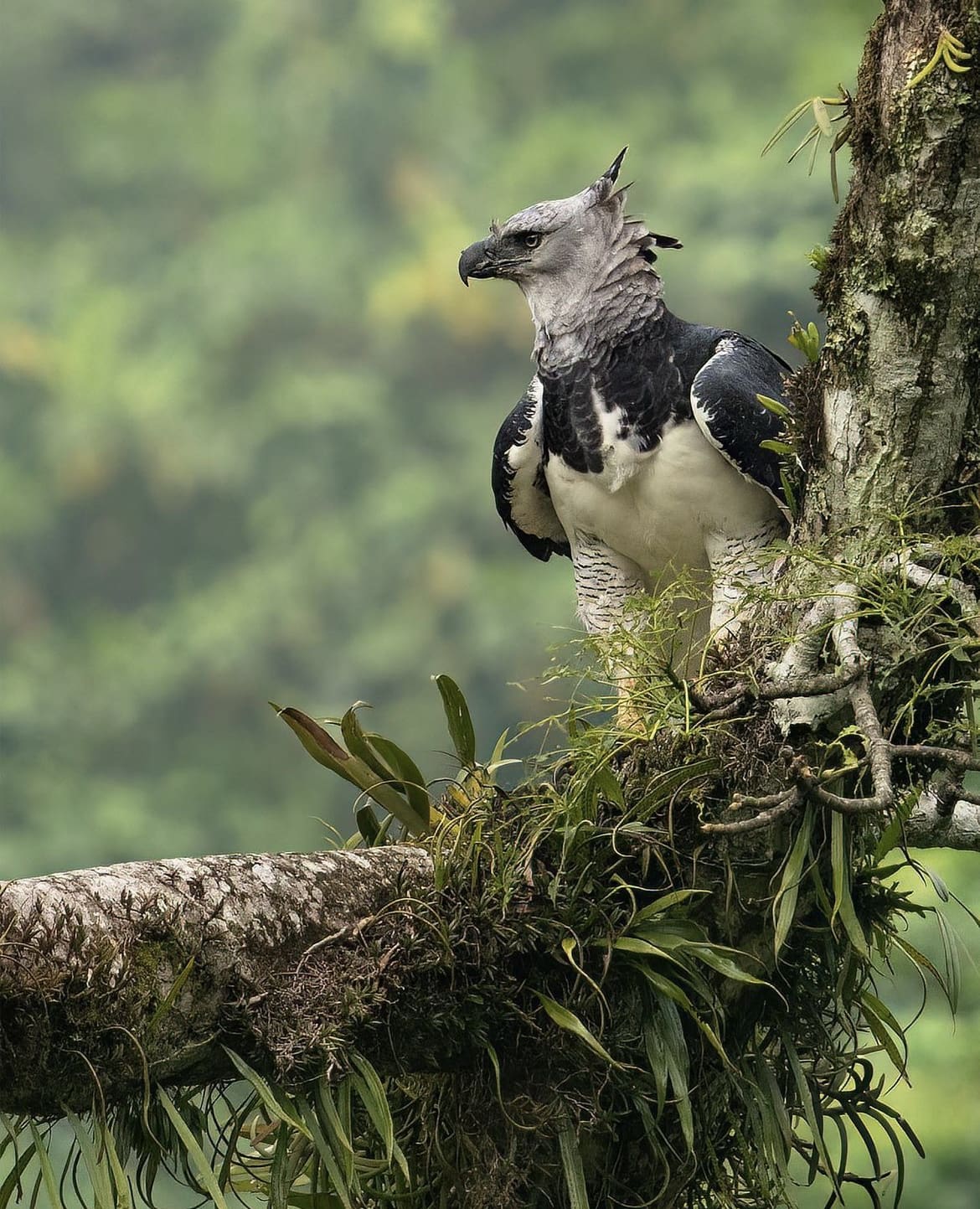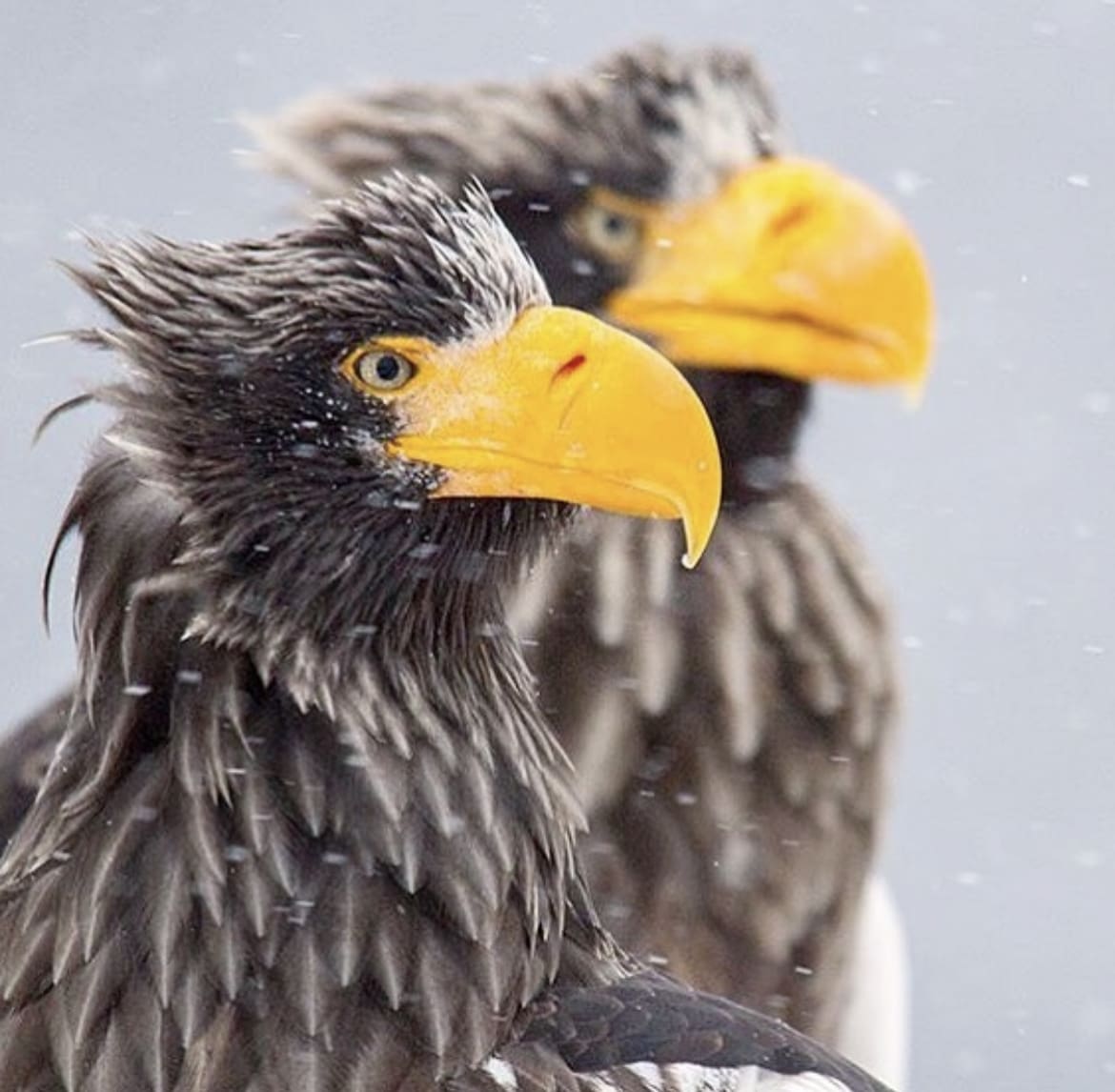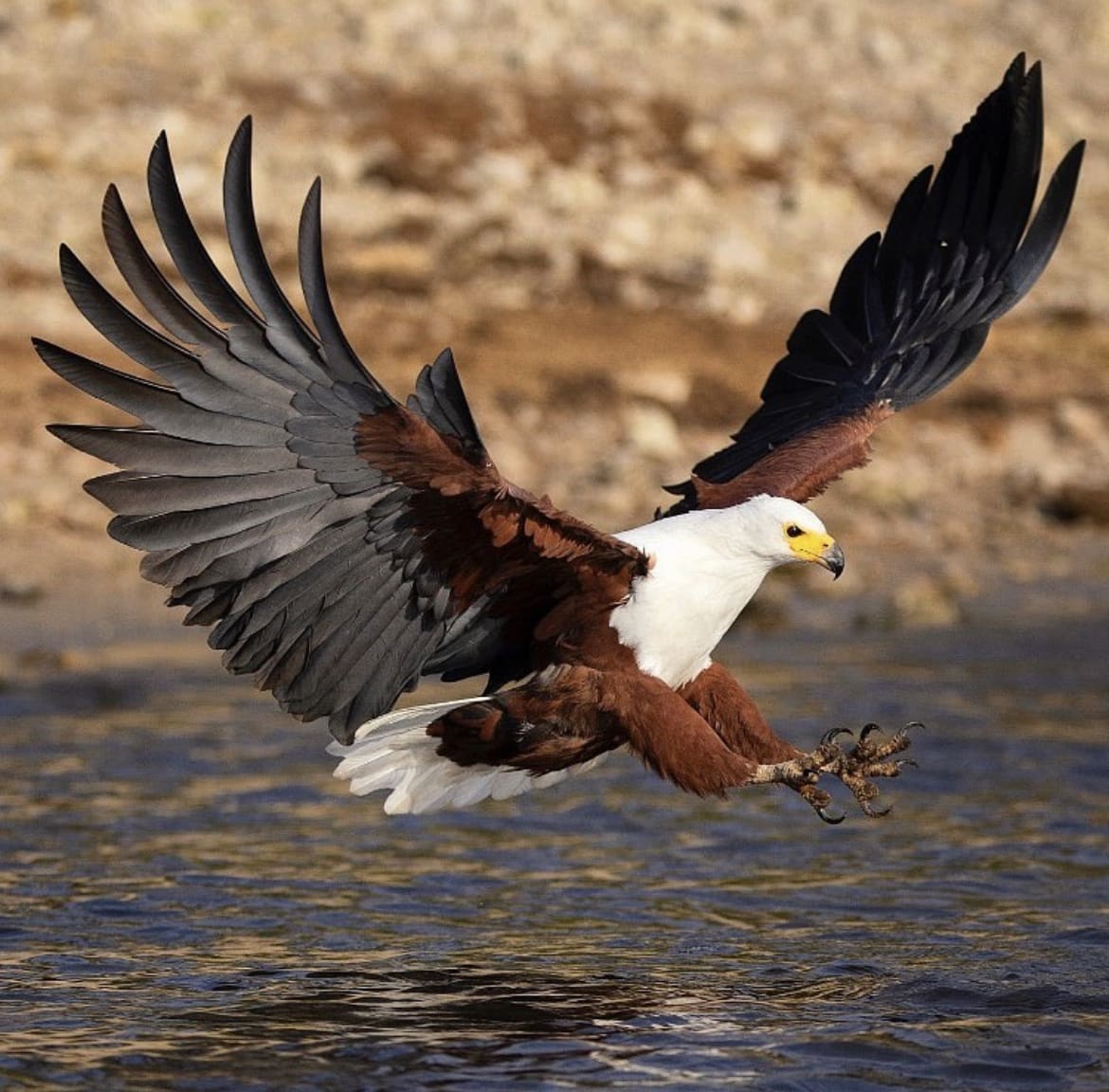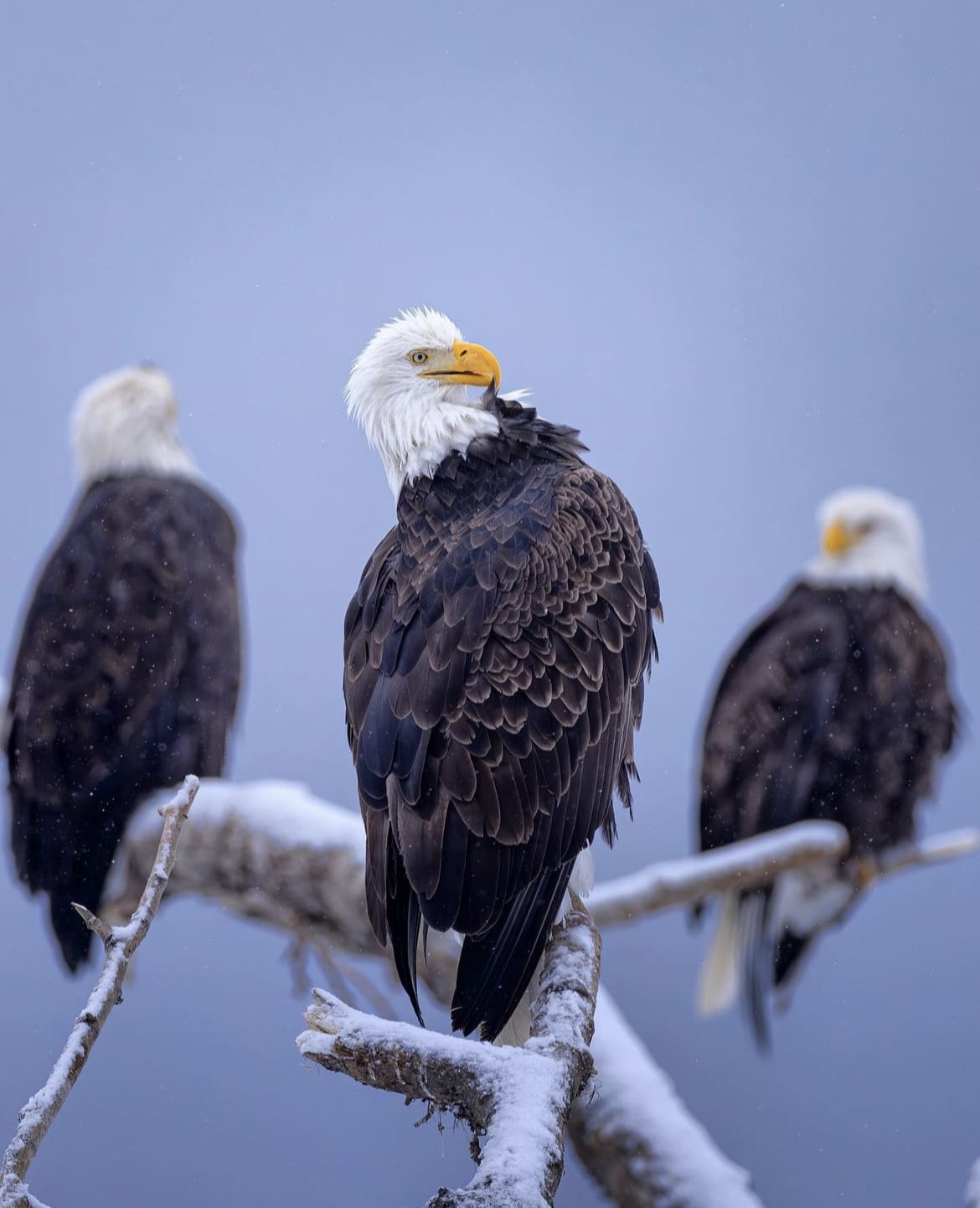Embark on an exhilarating journey from the magnificent peaks of towering mountains to the vast expanse of the shimmering oceans. Join us as we delve into the captivating world of the world’s largest eagles and unravel the mysteries of their extraordinary habitat. These majestic creatures, with their awe-inspiring wingspans and piercing gazes, command our attention as they soar through the skies, effortlessly navigating their surroundings.
From the rugged cliffs of the Himalayas to the untouched wilderness of Alaska, we will explore the diverse landscapes that these magnificent birds call home. Discover the secrets of their hunting strategies, witness their breathtaking aerial displays, and gain a deeper understanding of the delicate balance between predator and prey in these unique ecosystems.
Prepare to be amazed as we uncover the hidden wonders of the world’s largest eagles and marvel at the beauty of their natural habitats.
What are the world’s largest eagles?
1. Harpy Eagle (Harpia harpyja)
The harpy eagle is considered the largest and most powerful eagle in the world. It is found in the tropical rainforests of Central and South America. Adult harpy eagles can have a wingspan of up to 2.2 meters (7.2 feet) and weigh around 4 to 9 kilograms (9 to 20 pounds).

2. Philippine Eagle (Pithecophaga jefferyi)
Also known as the monkey-eating eagle, the Philippine eagle is endemic to the Philippines and is one of the rarest and most critically endangered eagle species. It has a wingspan that can reach up to 2.2 meters (7.2 feet) and can weigh between 4.5 to 8 kilograms (10 to 18 pounds).

3. Steller’s Sea Eagle (Haliaeetus pelagicus)
This massive eagle is found in coastal regions of northeastern Asia, primarily in Russia and parts of Japan. It has a wingspan that can reach up to 2.4 meters (7.9 feet) and can weigh around 6 to 9 kilograms (13 to 20 pounds).
It’s worth noting that some sources may rank these eagles differently based on various factors such as wingspan, weight, or length. However, these three are generally considered to be among the largest eagles in the world. Keep in mind that there might have been new discoveries or updates since my last knowledge update in September 2021.

Characteristics and behavior of the world’s largest eagles
The world’s largest eagles are truly remarkable creatures, boasting impressive physical characteristics and displaying fascinating behaviors. With wingspans reaching up to 9 feet and sharp talons capable of catching prey mid-flight, these eagles are built for power and precision. Their keen eyesight allows them to spot prey from great distances, while their strong beaks enable them to tear through flesh with ease.
These majestic birds are known for their remarkable hunting abilities, often targeting fish, small mammals, and even other birds. Their aerial acrobatics are a sight to behold, as they swoop and dive with incredible speed and agility. Despite their formidable appearance, these eagles are also known to exhibit nurturing behavior, fiercely protecting their young and forming lifelong bonds with their mates.
The habitat of the world’s largest eagles plays a crucial role in shaping their behavior and survival. Let’s explore the different types of habitats these magnificent birds call home.

Mountain habitats of the world’s largest eagles
The world’s largest eagles have a strong affinity for mountainous regions, where they can find ample prey and suitable nesting sites. One notable example is the Golden Eagle, which thrives in the rugged cliffs and open spaces of the Himalayas. These eagles are often found at high altitudes, where they can take advantage of the strong updrafts and thermal currents to effortlessly soar through the skies.
Mountain habitats provide these eagles with a diverse range of prey options, including small mammals, birds, and even mountain goats. The rocky terrain and sparse vegetation of these regions offer the perfect camouflage for hunting and nesting. I
t’s truly a sight to behold, witnessing these magnificent birds soar above the lofty peaks, their wings spread wide as they survey their vast domain.

Coastal habitats of the world’s largest eagles
In addition to mountain habitats, the world’s largest eagles also thrive in coastal areas, where they can access an abundance of fish and marine life. The Steller’s Sea Eagle, for example, is a prime example of an eagle that calls the coastal regions of Alaska and Russia its home.
These eagles are known for their impressive fishing skills, diving into the water at high speeds to catch their prey. Coastal habitats offer a rich source of food for these eagles, with an abundance of fish, shellfish, and other marine creatures. The proximity to the ocean also provides these eagles with a ready supply of fresh water, essential for their survival.
The coastal landscapes, with their majestic cliffs and expansive shorelines, provide the perfect backdrop for these magnificent birds as they hunt, nest, and raise their young.

Importance of habitat conservation for the world’s largest eagles
The habitats of the world’s largest eagles are under constant threat from human activities and environmental changes. As human populations expand and industries encroach upon natural habitats, the delicate balance between predator and prey is disrupted, and the survival of these magnificent birds is put at risk.
It is therefore crucial that we prioritize habitat conservation efforts to protect these eagles and the ecosystems they depend on. By preserving their habitats, we ensure the continued existence of these awe-inspiring creatures and the diverse array of species that coexist within their ecosystems.
Habitat conservation also plays a vital role in maintaining the natural balance of these regions, contributing to the overall health and sustainability of our planet.

Threats to the habitat of the world’s largest eagles
Despite their remarkable resilience, the world’s largest eagles face numerous threats to their habitats. One of the primary threats is habitat loss due to deforestation and urbanization.
As forests are cleared and replaced with human settlements, the eagles lose their nesting sites and hunting grounds. Pollution is another significant threat, particularly in coastal habitats where industrial waste and oil spills can contaminate the water and poison the prey. Climate change is also a growing concern, as rising temperatures and changing weather patterns disrupt the delicate ecosystems that these eagles rely on.
These threats, combined with illegal hunting and poaching, pose a grave danger to the survival of the world’s largest eagles and must be addressed urgently.
Conservation efforts for the world’s largest eagles
Thankfully, there are dedicated conservation organizations and passionate individuals working tirelessly to protect the world’s largest eagles and their habitats. These efforts involve a combination of research, habitat restoration, and public awareness campaigns. Scientists study the behavior and ecology of these eagles to gain a better understanding of their needs and vulnerabilities.
Habitat restoration projects aim to recreate suitable nesting and hunting grounds, ensuring the long-term survival of these magnificent birds. Public awareness campaigns educate communities about the importance of conserving these habitats and the role they play in maintaining a healthy ecosystem.
By supporting these initiatives, we can make a significant impact in safeguarding the world’s largest eagles for future generations to admire and cherish.

Tips for eagle watching and habitat exploration
For those who are eager to witness the beauty of the world’s largest eagles in their natural habitats, here are some tips to enhance your experience. First and foremost, research the specific habitats and seasons when these eagles are most active and visible. This will increase your chances of spotting them in the wild.
Seek out knowledgeable guides or join organized tours that specialize in eagle watching to maximize your chances of a successful sighting. Be patient and observant, as these eagles may blend seamlessly into their surroundings. Look for signs of their presence, such as nests, feathers, or the telltale cry of an eagle.
Finally, remember to respect their habitats and observe from a safe distance to minimize disturbance. By following these tips, you can embark on an unforgettable adventure and witness the world’s largest eagles in all their majestic glory.
Conclusion
The world’s largest eagles are truly remarkable creatures, and their habitats are equally extraordinary. From the rugged mountains to the breathtaking coastlines, these eagles have adapted to thrive in diverse ecosystems, showcasing their incredible hunting skills and awe-inspiring aerial displays.
However, these habitats are under constant threat from human activities and environmental changes. It is our responsibility to prioritize habitat conservation efforts to ensure the survival of these magnificent birds and the delicate ecosystems they call home.
By raising awareness, supporting conservation initiatives, and respecting these habitats, we can play a vital role in preserving the beauty and wonder of the world’s largest eagles for generations to come.
